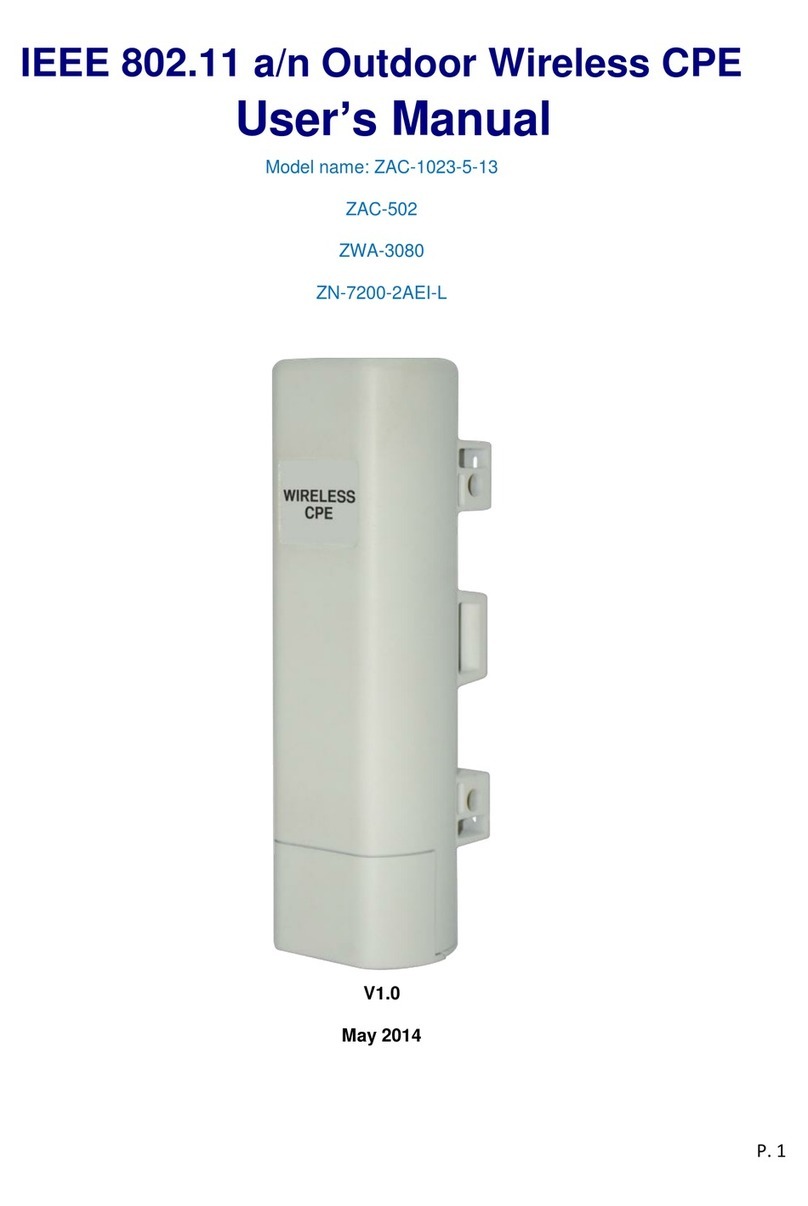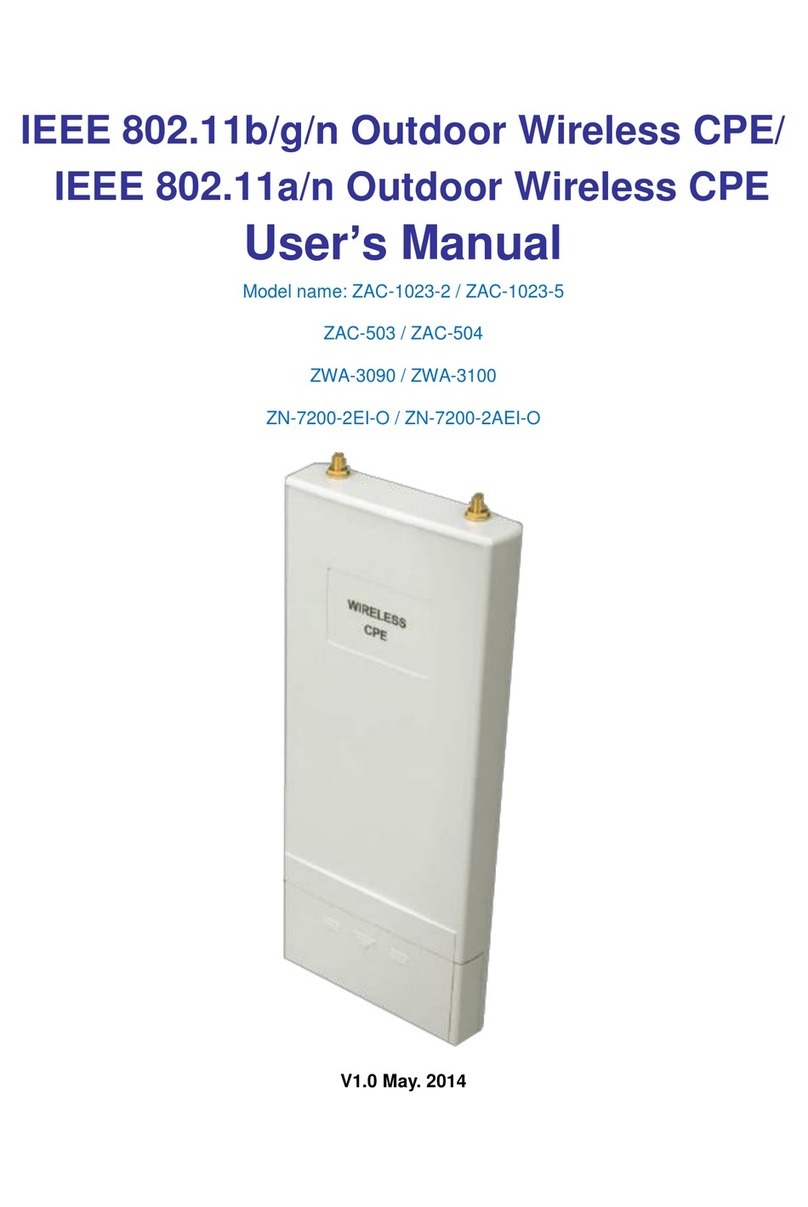Zcom XG-3120 User manual
Other Zcom Wireless Access Point manuals
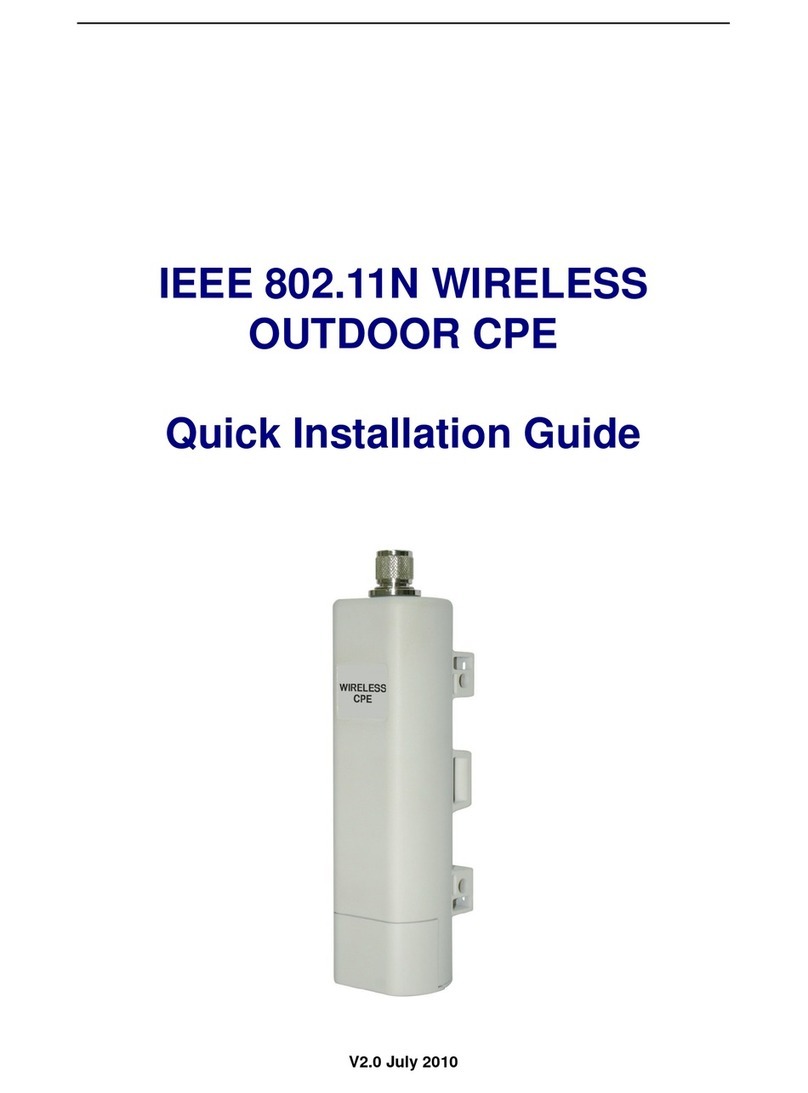
Zcom
Zcom ZCN-1523H-2-8 User manual
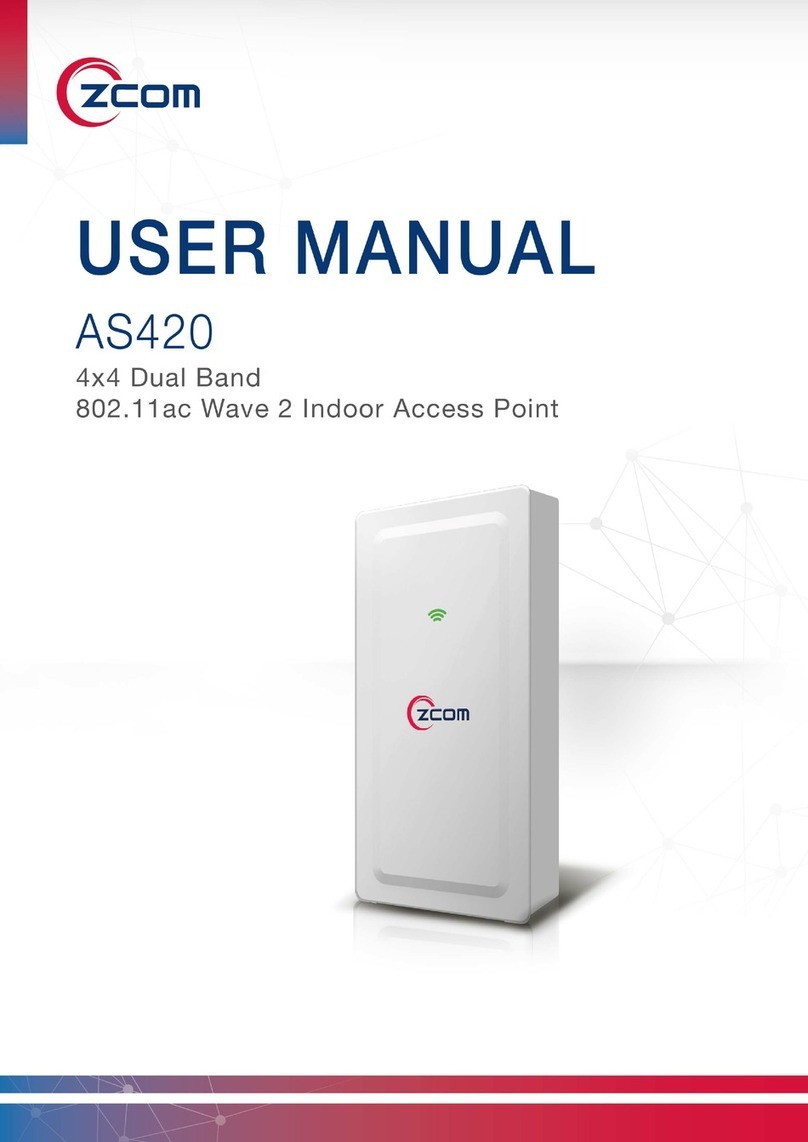
Zcom
Zcom AS420 User manual
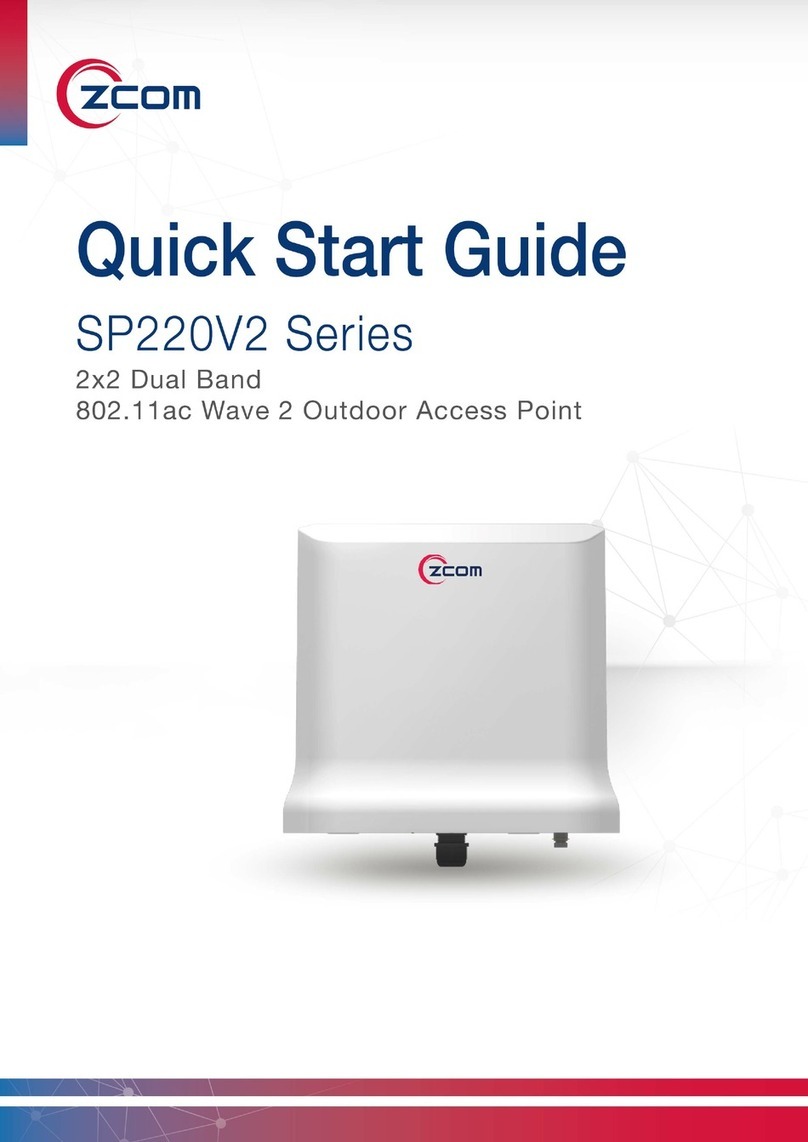
Zcom
Zcom SP220V2 Series User manual
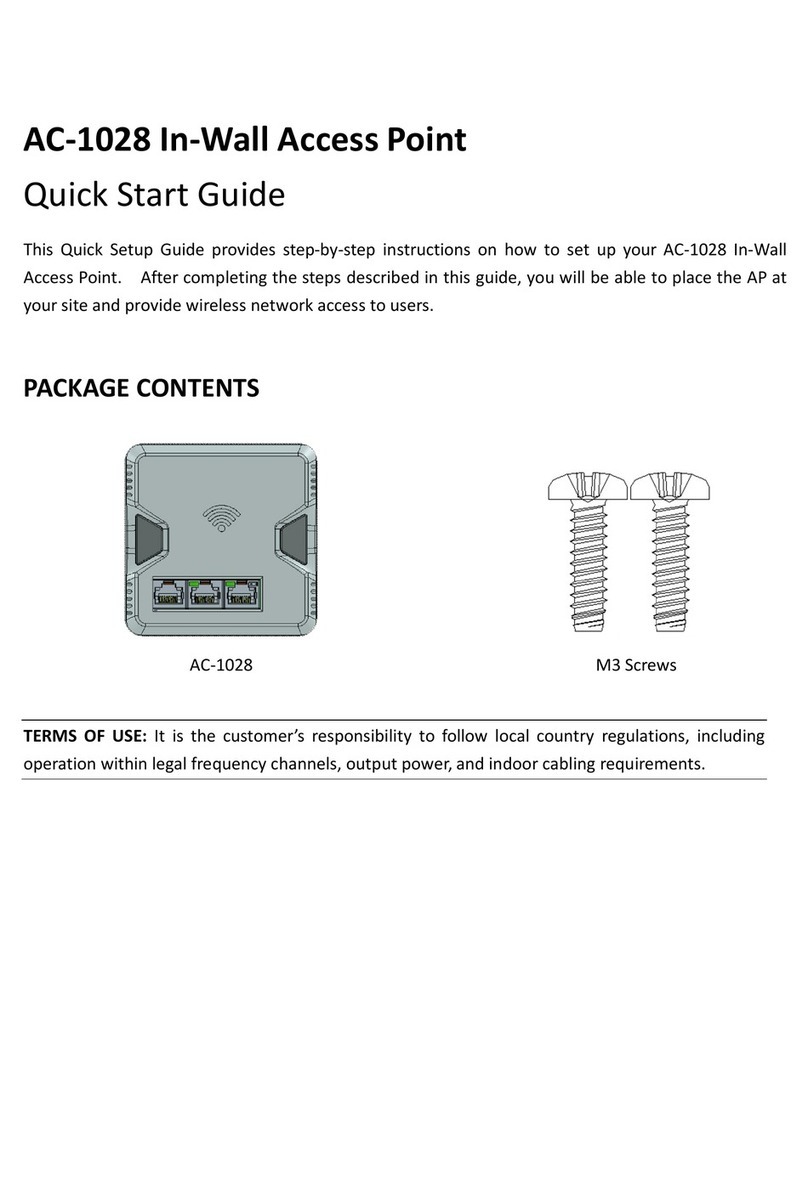
Zcom
Zcom AC-1028 User manual
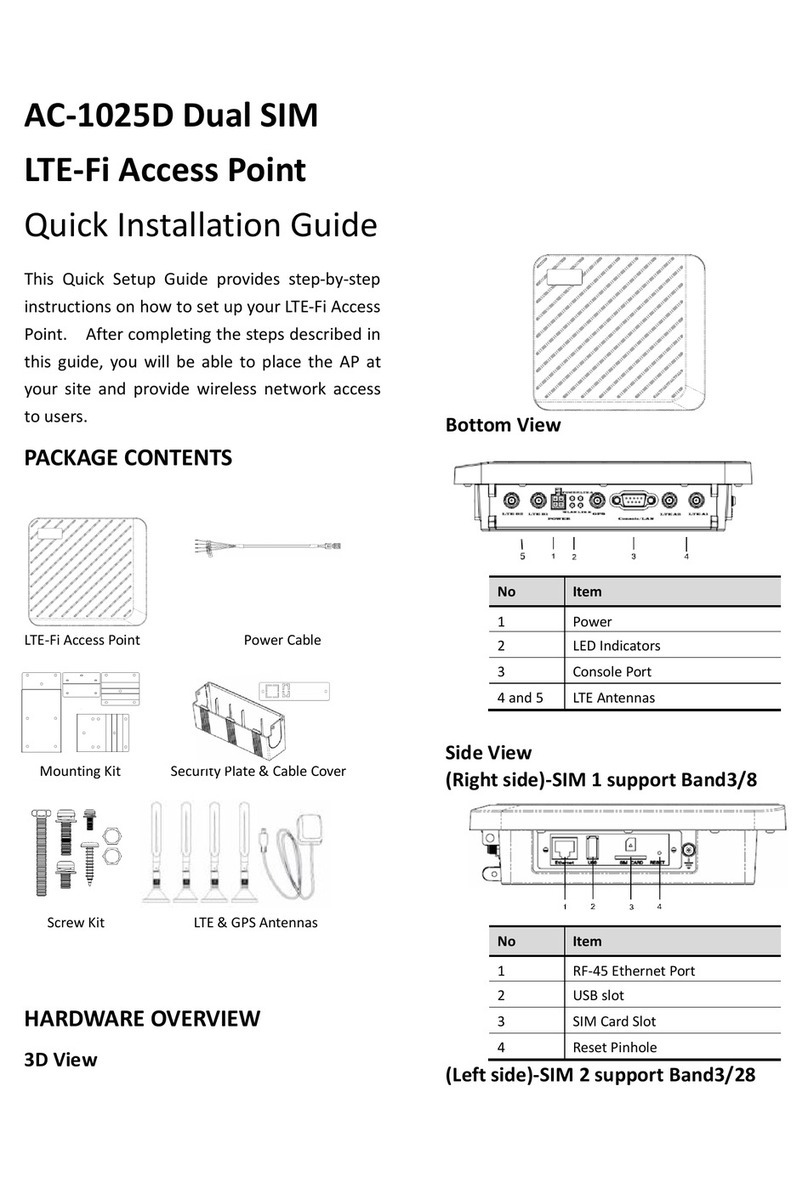
Zcom
Zcom AC-1025D User manual
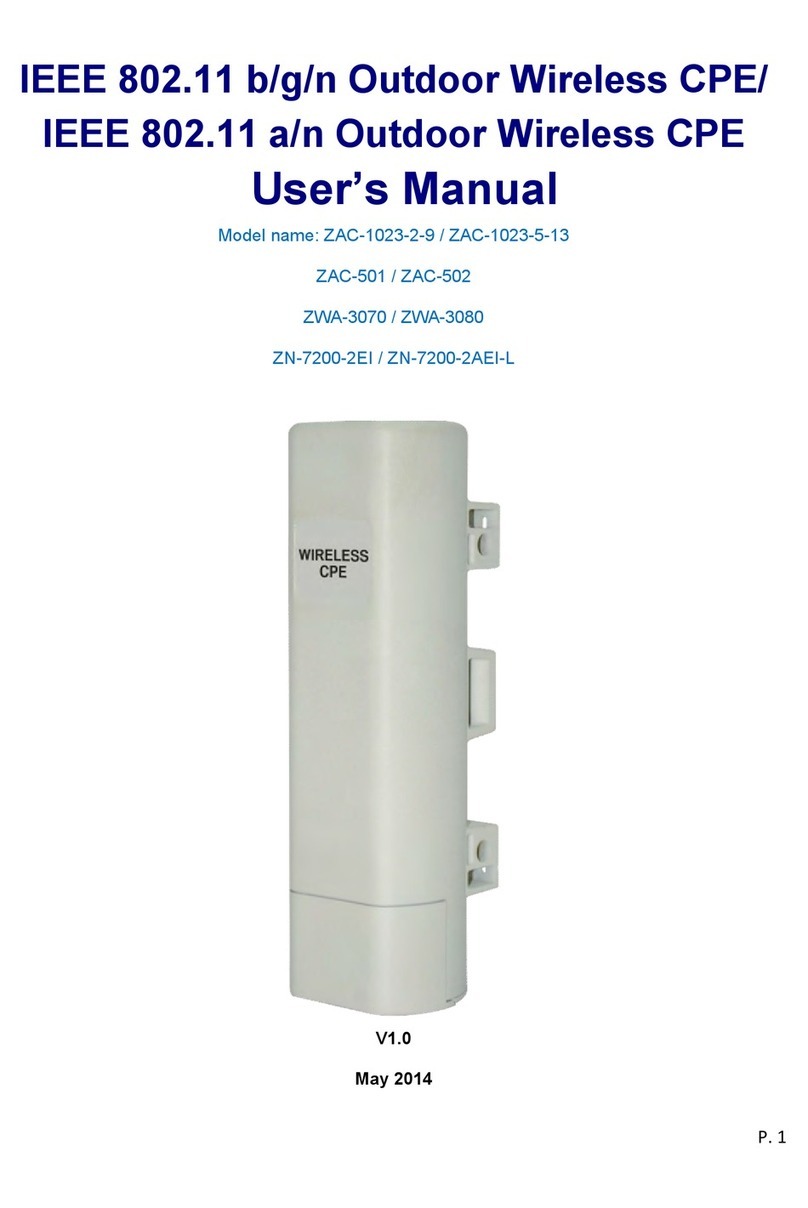
Zcom
Zcom ZAC Series User manual
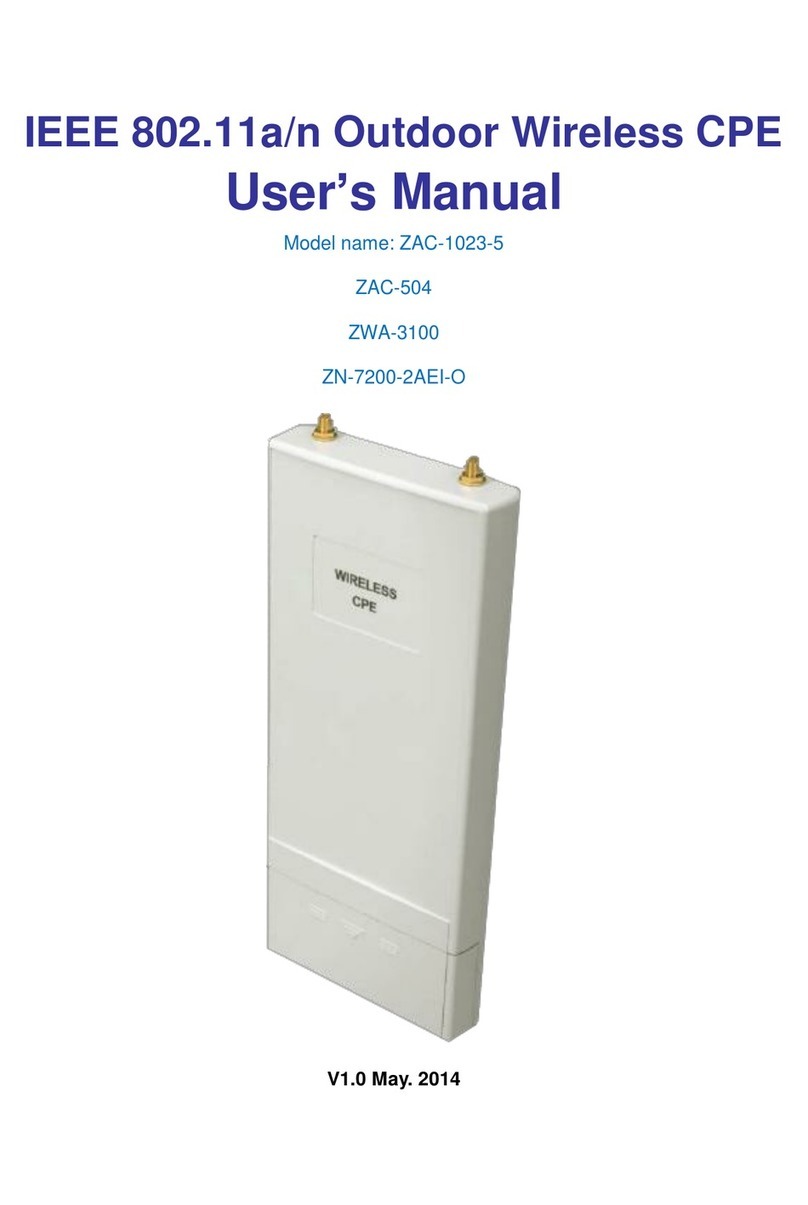
Zcom
Zcom ZAC-1023-5 User manual

Zcom
Zcom ZAC-1023-2-9 User manual
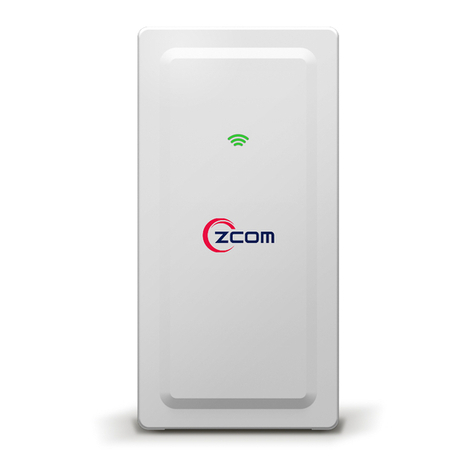
Zcom
Zcom AS220V2 User manual
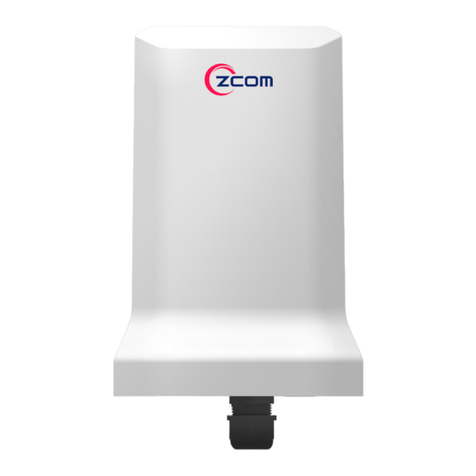
Zcom
Zcom SP230 Series User manual
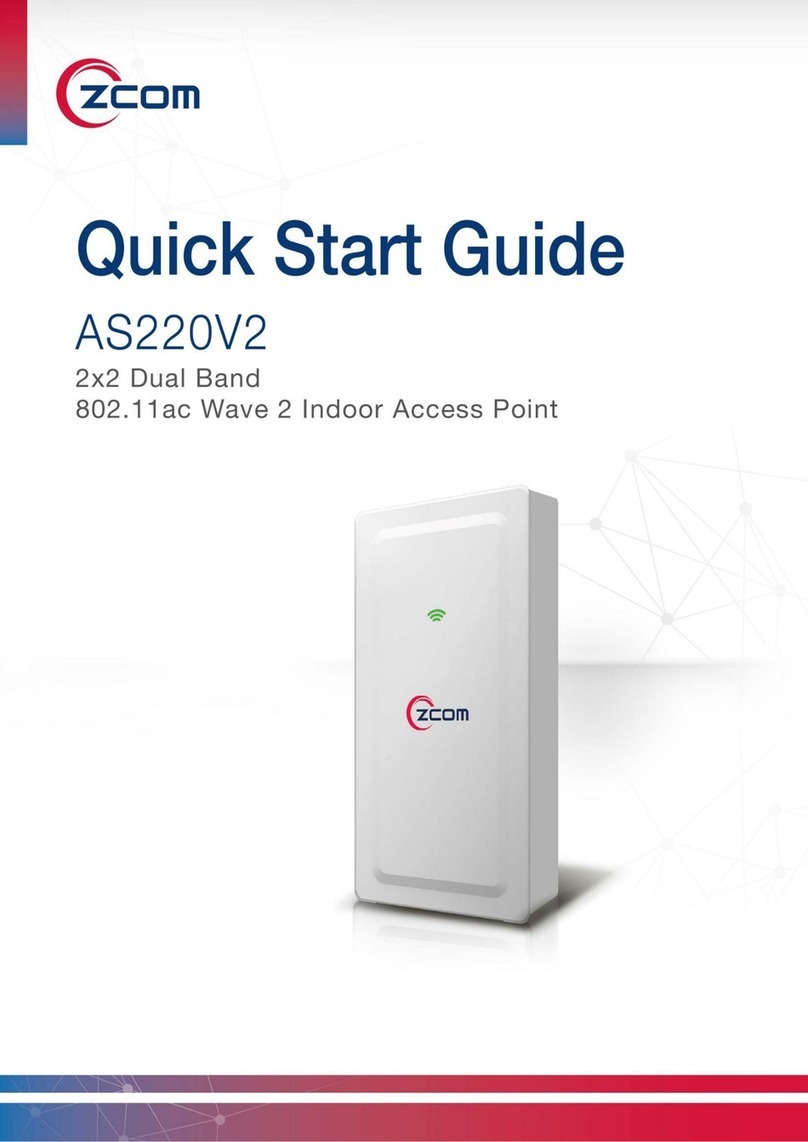
Zcom
Zcom AS220V2 User manual
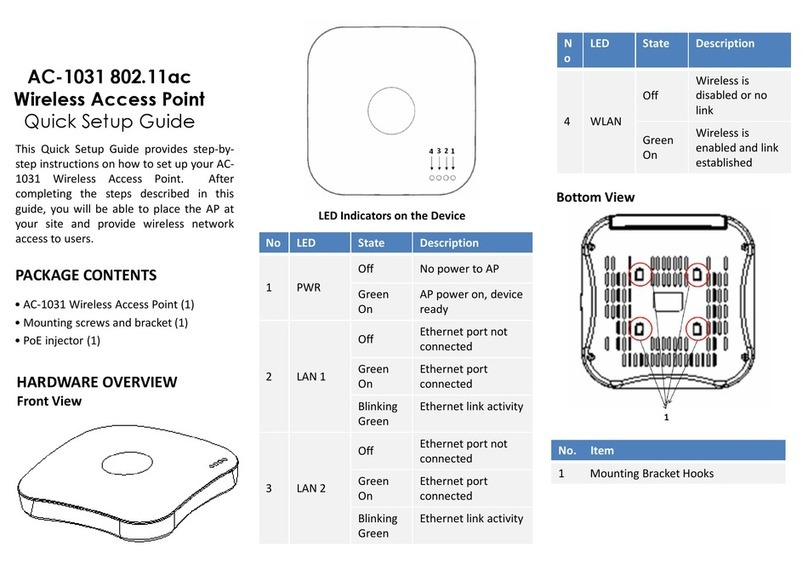
Zcom
Zcom AC-1031 User manual

Zcom
Zcom SP230 Series User manual

Zcom
Zcom AS220V2 User manual
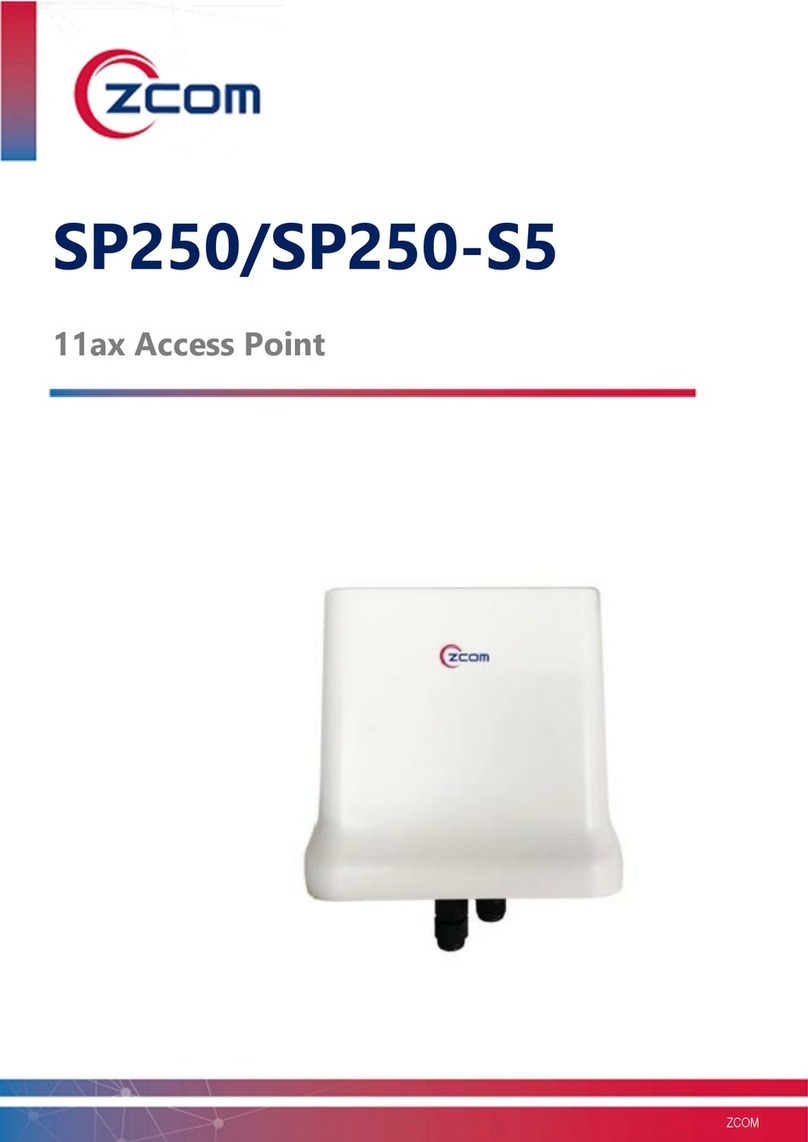
Zcom
Zcom SP250 User manual
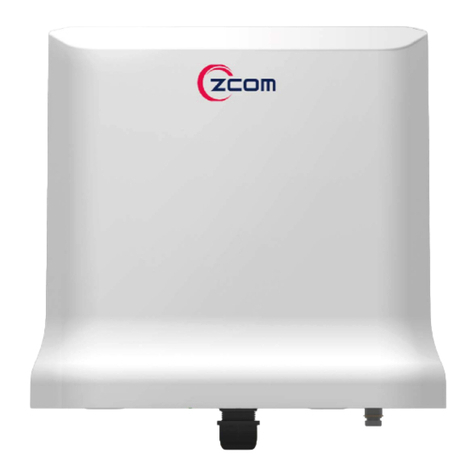
Zcom
Zcom SP420 Series User manual

Zcom
Zcom SP230 Series User manual
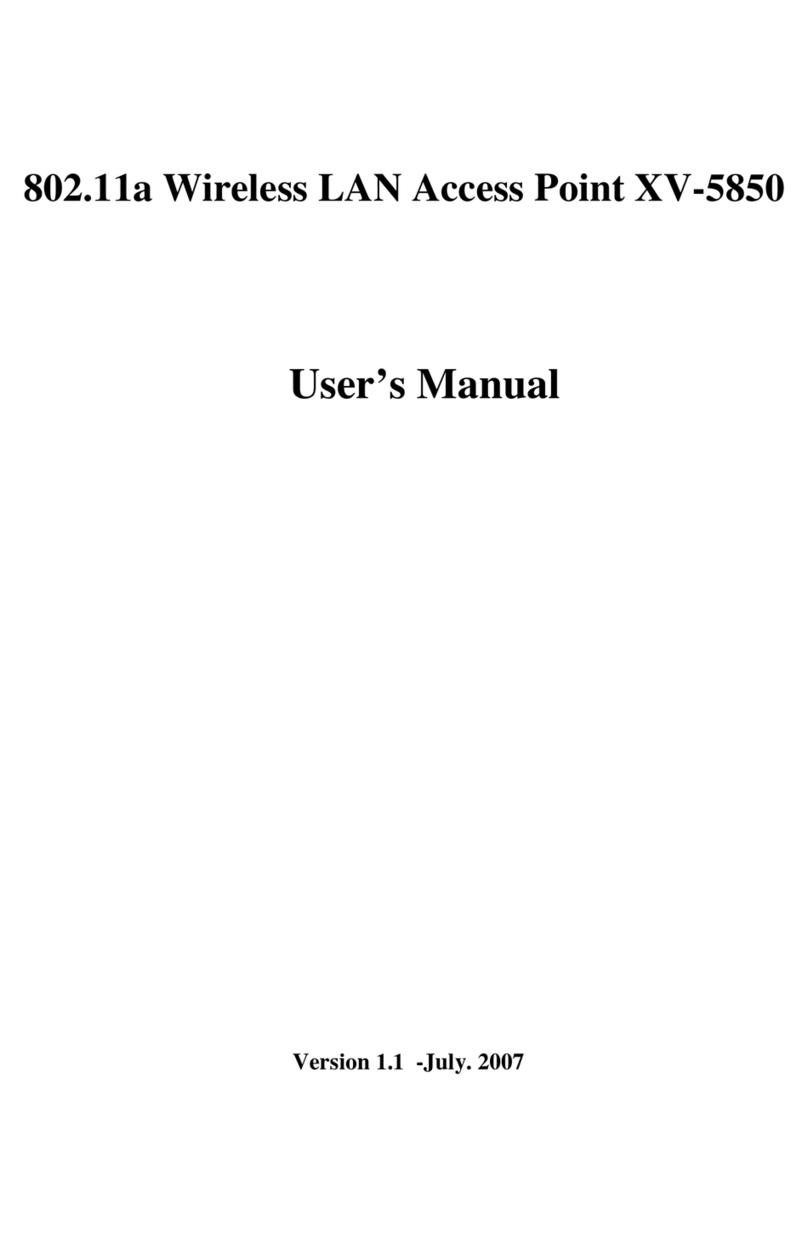
Zcom
Zcom XV-5850 User manual
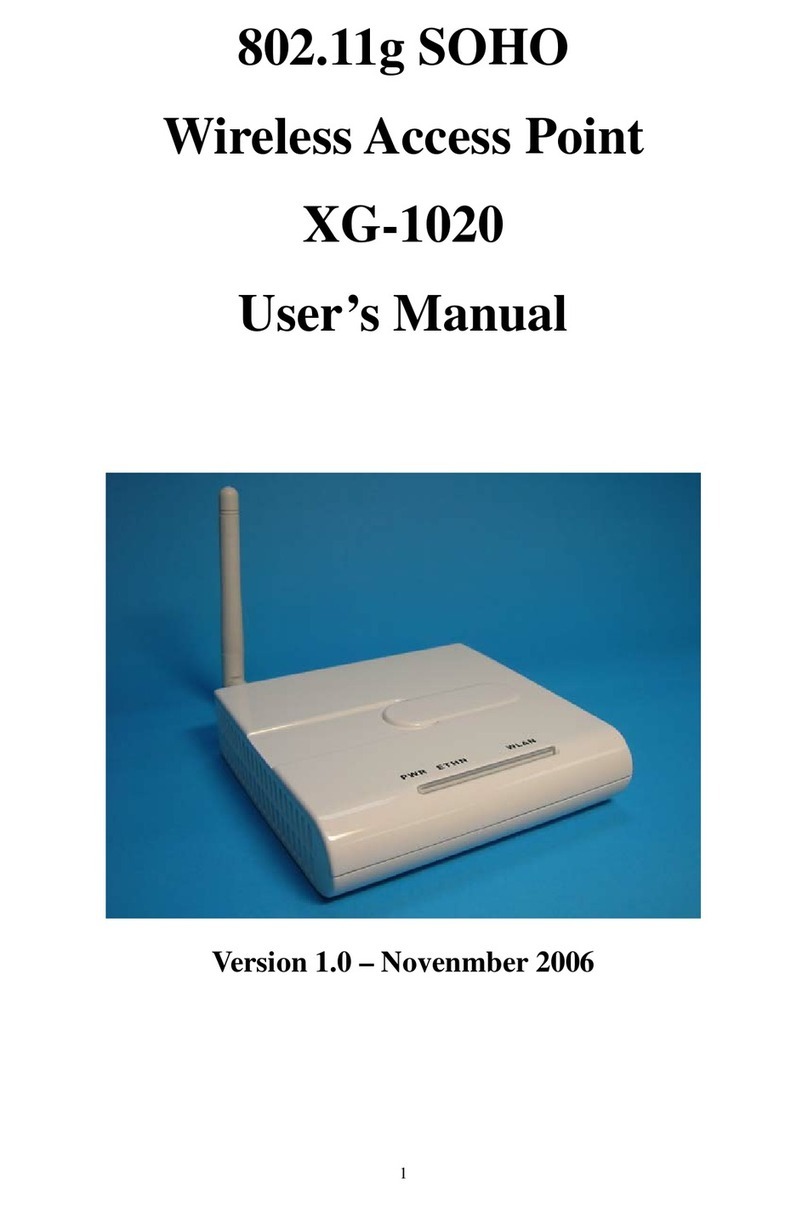
Zcom
Zcom XG-1020 User manual
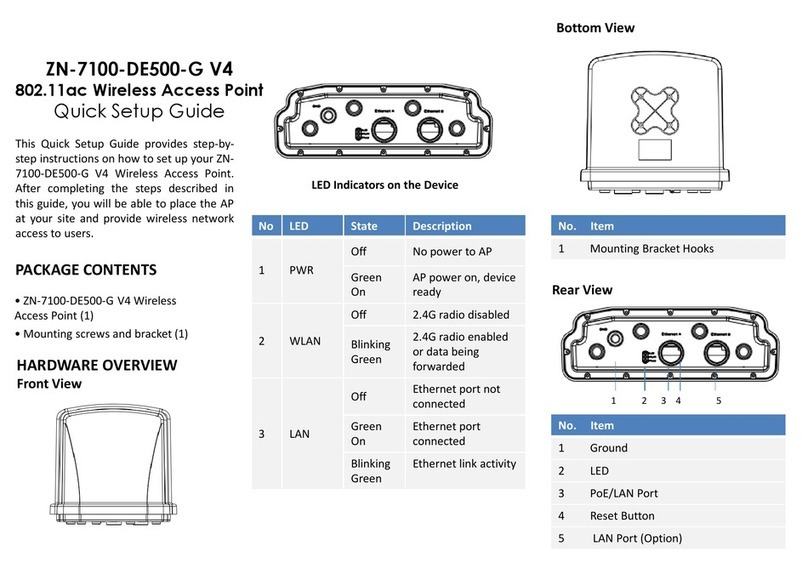
Zcom
Zcom ZN-7100-DE500-G V4 User manual
Popular Wireless Access Point manuals by other brands

Monoprice
Monoprice MW301A user guide

D-Link
D-Link DWL-2700AP - AirPremier Outdoor Wireless Access... user manual

D-Link
D-Link DWL-2100AP - AirPlus Xtreme G Quick installation guide

TP-Link
TP-Link Auranet EAP225 Quick installation guide

D-Link
D-Link DWL-2100AP - AirPlus Xtreme G Quick installation guide

Ubiquiti
Ubiquiti NanoStation NSM2 quick start guide
